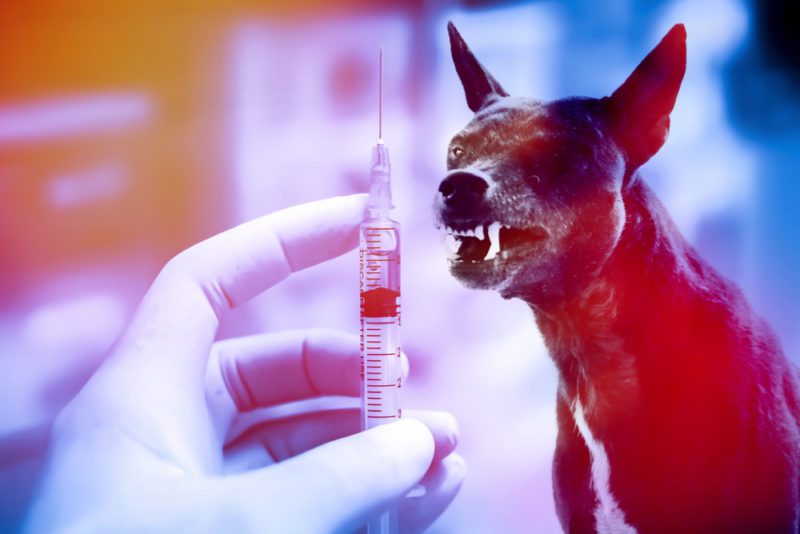Rabies is a preventable viral disease most often transmitted through the bite of a rabid animal. Most rabies cases reported in South Africa were caused by bites from rabid or stray dogs.
susceptibility of rabies
Any person that is in contact with an infected animal can get rabies. Children are at higher risk as they tend to play with dogs, can not defend themselves and will more easily get bitten. People working with animals like veterinarians and laboratory workers are at greater risk because of exposure through their professional activities.

Rabies hosts
All animals are susceptible to get infected and transmit Rabies. The most common animals in South Africa that transmit rabies are:
Transmission
The rabies virus is spread to humans and other animals through contact with saliva or tissue of infected animals (i.e. scratches, bites, licks on broken skin and mucous membranes of the lips or eyes). It cannot be transmitted through intact skin, so touching, petting or being close to the animals is not a risk. The majority of human exposures in South Africa are linked to dogs.
symptoms
Most of us can picture the appearance of a rabid animal:
- Aggressive
- vicious and
- out of control.
This is true for the “furious” form.
Rabies can also present in a ‘dumb” form:
Where the animal is not aggressive but appears
- non-responsive and
- depressed.
Other non-specific symptoms:
- Sudden change in behaviour
- Drooling
- Chewing stones
- Paralysis of the lower jaw and tongue (can also affect the legs)
- Loss of territorial instinct – animal wanders around aimlessly
- When a domesticated (tame) animal suddenly becomes wild or a wild animal suddenly becomes tame.
How Long After Infection Do Signs of Rabies Show?
The virus usually incubates from two to eight weeks before signs are noticed. However, transmission of the virus through saliva can happen as early as ten days before symptoms appear.
Which Dogs Are Most at Risk for Contracting Rabies?
Unvaccinated dogs who are allowed to roam outdoors without supervision are most at risk for infection. They’re exposed to wild animals and have a greater chance of fighting with infected stray dogs or cats.
How Is Rabies Diagnosed?
There is no accurate test to diagnose rabies in live animals. The direct fluorescent antibody test is the most accurate test for diagnosis–but because it requires brain tissue, it can only be performed after the death of the animal.
How Is Rabies Treated?
There is no treatment or cure for rabies once symptoms appear. Since rabies presents a serious public health threat, dogs who are suspected of having the virus are most often euthanized.
How Can Rabies Be Prevented?
Keeping your dog up to date with vaccinations is not only essential to prevention, it’s the law. Check with your veterinarian about the right vaccine and vaccination schedule for your dog. In many areas of the country, it’s mandatory that all domestic dogs and cats are vaccinated after the age of three months.
Vaccinating your pet not only protects him from getting rabies, it protects him if he bites someone. Dogs who have bitten humans are required to be confined for at least 10 days to see if rabies develops,
Avoiding contact with wild animals is also necessary to prevention. You may greatly decrease chances of rabies transmission by walking your dog on a leash, and supervising him while he’s outdoors. and if the animal’s vaccination records are not current, a lengthy quarantine or even euthanasia may be mandated. If you’re not sure of the laws in your town, consult your local animal affairs agency.
What Should I Do If I Think My Dog Has Had Contact With a Rabid Animal?
Call your veterinarian for an immediate appointment! Report the incident to your local health department and follow their recommendations.
